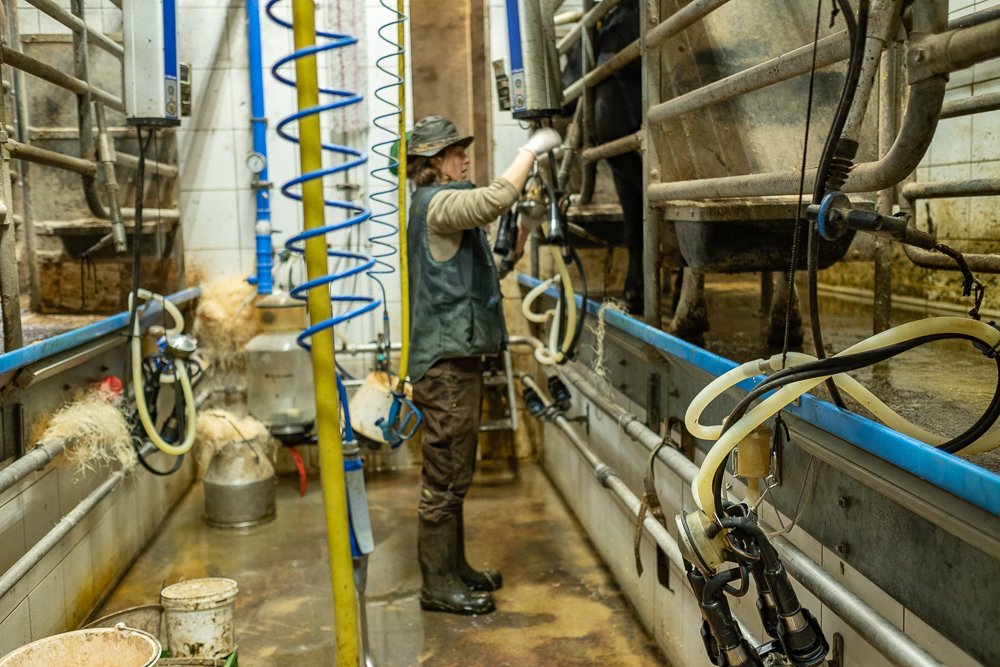Ground Work
A year at the Kattendorfer Hof organic CSA farm
(ongoing)


Roughly 60 years and 50 kilometres separate the black and white photo of my mother Gerda at the small family farm in Duvensee and the photo of Juliane, the herd manager at Germany’s biggest CSA farm Kattendorfer Hof in Kattendorf. Both villages are located in Schleswig-Holstein. The story of the farm of my mother’s family ended in 1965 when my grandmother had to sell the land due to the early death of my grandfather and the effects of the Land Consolidation Act which aimed to merge smaller parcels of land into large arable areas. It was the beginning of industrial agriculture with its uncompromising motto “Grow or give away!” By 1978, one million farms in Germany had disappeared. The farm of my grandparents was one of them. That’s why my mother associated farming with deprivation, loss and shame.
The Kattendorfer Hof story began in 1995 when master farmer Mathias von Mirbach started his business together with a companion. The organic farm is based on the Community Supported Agriculture model: most of the clients are subscribers who buy shares of the farm’s harvest in advance, so the farmers can rely on a steady source of income and prices reflect the production costs. The Kattendorfer Hof provides consumers in Schleswig-Holstein and Hamburg with fresh vegetables, meat, milk, cheese and some grain. Most of the grain goes to an organic bakery. Around 80 people now work on the CSA farm which adheres to strict Demeter principles, and more than 900 subscribers pick their weekly share from the harvest at one of the farm stores or food cooperatives. Shared responsibility builds connections: members often help with the harvest.
I started using my camera to document daily work at the farm in Kattendorf and at the extension farm in Neverstaven in 2021. This long-term project is a tribute to my mother, the work of farmers in general and of organic farmers in particular. The latter group’s contribution goes beyond feeding humanity: the farmers in Kattendorf and Neverstaven also help to preserve our natural resources thanks to six-year crop rotation and the adoption of a circular economy based on Rudolf Steiner’s biodynamic approach.
Much has changed since my mother milked the cows by hand. New technologies have entered the scene, allied to novel production and marketing models such as Community Supported Agriculture. Other things remain the same, at least on a Demeter farm where cows are still allowed to keep their horns, as was common practice in the fifties.
The farmers and their workers at the Kattendorfer Hof are proud people, mindful of the fact that theirs is one of the most honourable of all worldly occupations, the basis of every civilisation since time immemorial. This story belongs to them.
Read here.


